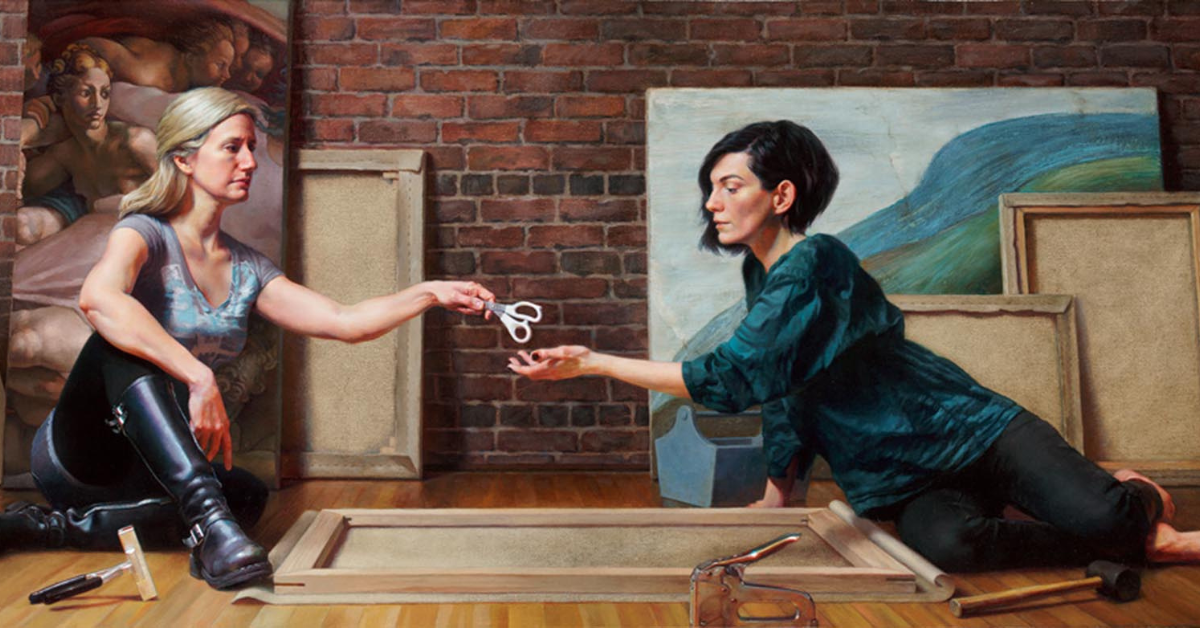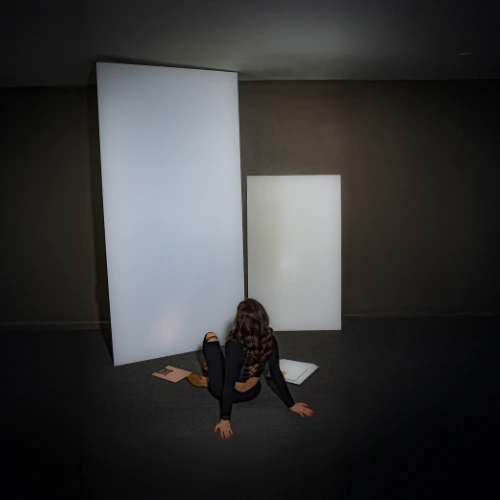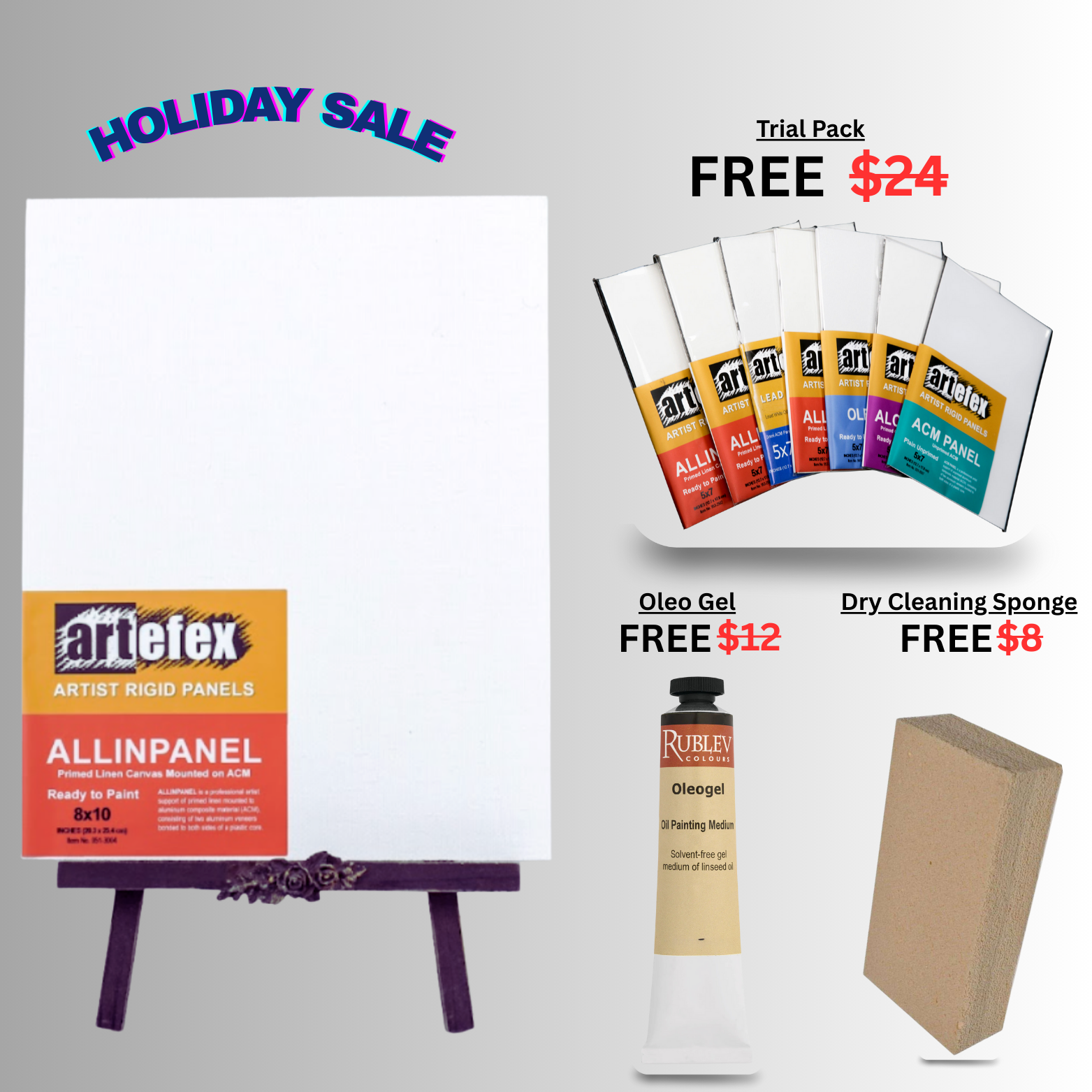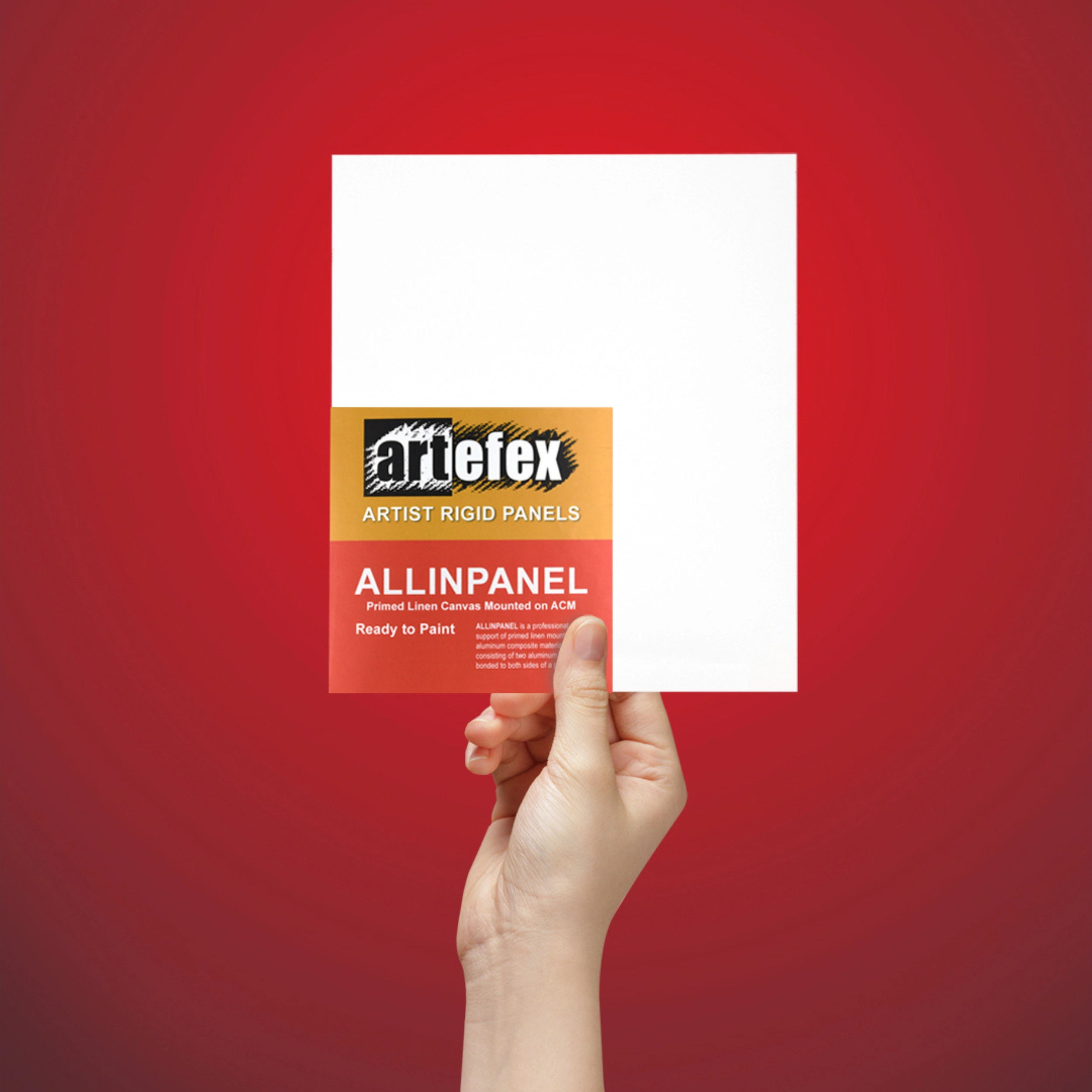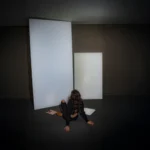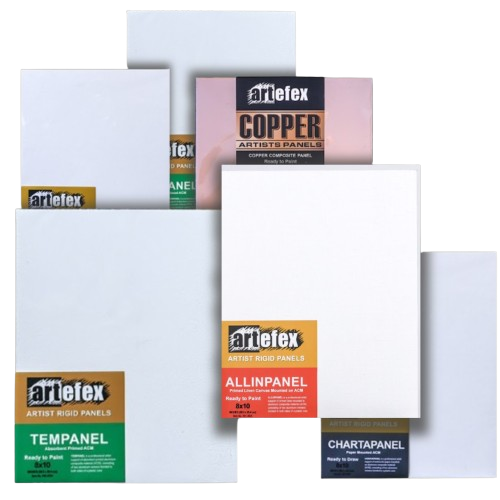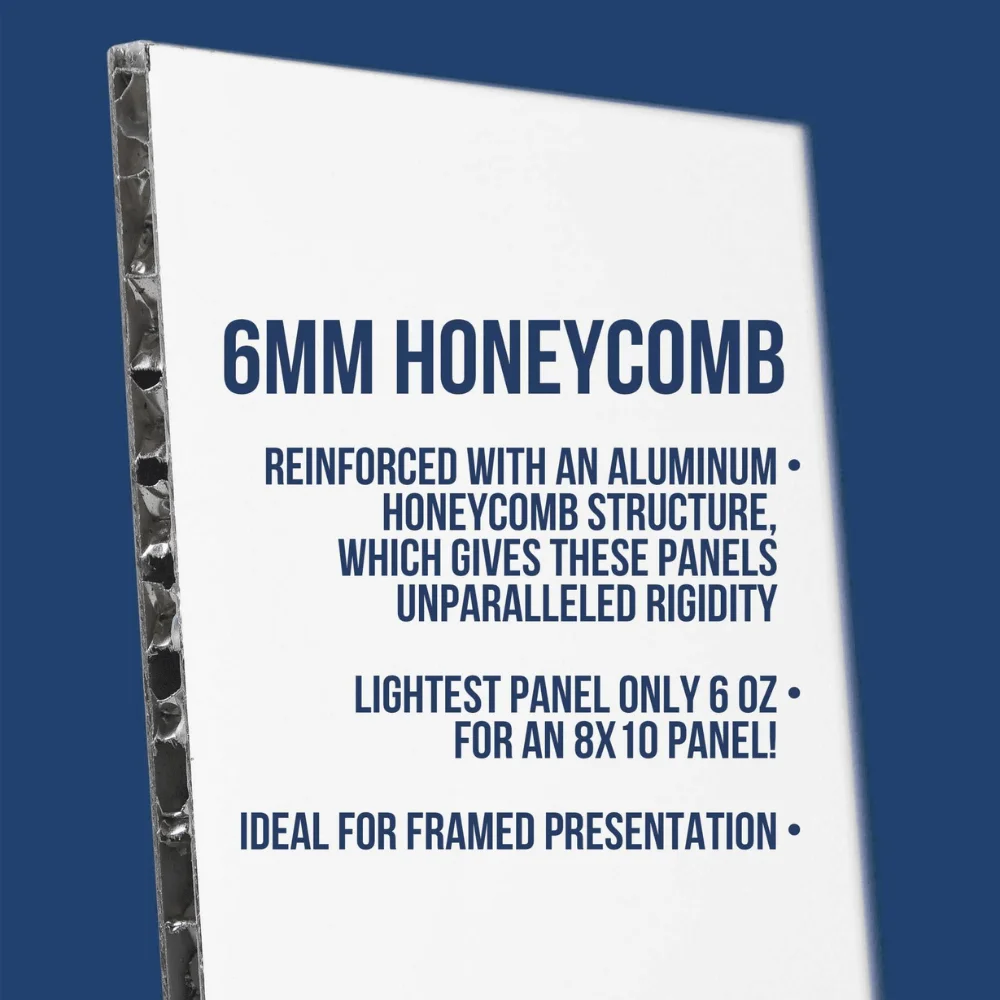Getting the right art panel feels like looking for a needle in a haystack. Artists who want the best painting surfaces know this challenge well. My standards are incredibly high, and the last six months with theArtefex 538 have changed how I create art.
I will start out by acknowledging I am an incredibly picky painter. I hold unreasonably high standards for myself and my work, and this rubs off on my standards for the supplies that I use. I am also, however, incredibly impatient. This means I just want to buy something, have it be perfect, and start painting.
Traditional oil painting panels and linen panels never quite worked for me. The Artefex 538 changed everything with its quality control and custom sizing options that regular canvas can’t match. The medium/low absorbency rating pairs perfectly with its low directional texture to create an ideal surface for my painting style. The aluminum composite material makes it more durable than standard canvas options.
Let me share my hands-on experience with the Artefex 538. We’ll look at its features, benefits, and why it could be exactly what you need.
Why I Needed an Alternative to Traditional Canvas
As an artist who’s pretty picky, I’ve always been looking for the perfect painting surface. My trip to find alternatives to traditional canvas started because of practical needs and my own priorities. Let me tell you why I started this search and how I ended up finding the Artefex 538 art panel.
The limitations of stretched canvas
Stretched canvas has been around for centuries, but it has several drawbacks that can get in the way of creating art and might affect how long artwork lasts. One of the biggest problems is the tendency for stretched canvas to become loose over time[1]. This affects how the painting looks and can make the paint layers crack when there are vibrations or temperature changes [1].
The job of stretching canvas itself can be tricky. You just need a lot of effort to get a tight, even surface, and you might not mount it perfectly on the stretcher bars [1]. I often was frustrated with these issues.
Stretched canvas can get damaged easily too. It’s pretty easy to punch a hole through canvas, which really worries artists who put so much time and work into their pieces [1]. The bulky size of stretched canvases makes them hard to store and move around, especially if you work on location or go to art shows often [1].
My specific requirements for a painting surface
My artistic style made me really particular about my painting surface. I wanted a rigid panel that would last long, be easy to customize, and simple to frame and ship. Making my own surfaces wasn’t an option because I didn’t have the time.
My holy grail is a versatile surface that checks a few boxes:
I wanted a rigid panel for both longevity, ease of size customization, and ease of framing/shipping. I don’t have the time, space, or desire to make my own surfaces.
I need something smooth, but not TOO smooth. For highly rendered smooth objects, I need a surface with minimal hills and valleys that won’t get in the way of the final appearance.
Furthermore, when there is texture from the canvas, I don’t want it to be TOO mechanical (think cheap cotton canvas or where the criss-cross of the fibers are obvious) but yet not TOO organic (super smooth except big random bumps here and there).
Size options were really important too. Standard sizes felt too limiting, and I wanted to work with dimensions that fit my artistic vision without being stuck with pre-set formats.
Just call me high maintenance Goldilocks. But my hair is purple so I’ll be Purplocks.
The search for the perfect art panel board
Looking for the ideal painting surface took me through lots of options. I started with Claessens canvas and Raphael’s oil-primed linen glued to wood. These worked fine for a while, but Claessens turned out to be too textured for my changing style, and I really hated stretching canvas.
Jerry’s Artarama panels worked for a bit. I bought large sizes and cut them with a circular saw to get the right section with a vertical weave. This wasn’t perfect though. I wasted materials, had limited size options, and my studio was always full of sawdust. The quality started going downhill too, which made me nervous about finding something reliable.
I spent a year testing 5″ by 7″ samples from many companies, including Artefex. This gave me a full picture of what was out there. That’s when I found that Artefex used the same canvas (Belle Arte Linen) I loved from the Raphael panels, but they glued it to an Aluminum Composite Material (ACM) panel. This combo fixed many of my issues. Yay!
The . They stay flat better than wood panels ACM panels work better than traditional supports[2]. They’re light enough for big paintings and easy to move around [2]. These panels don’t get damaged as easily as stretched canvas [2].
The sort of thing I love about the Artefex 538 panel is how easy it is to customize. You can trim ACM panels with a method instead of cutting down wooden panels score-and-snap[3]. No power tools needed, and no sawdust everywhere.
These panels use a special to stick the canvas to the ACM board reversible glue [3]. If something happens to a panel, you can take the canvas off and put it on a new one. That’s extra protection for your artwork.
The I already knew and liked, combined with this new ACM panel, gave me everything I wanted. It had that smooth-but-textured surface, plus it was rigid, tough, and easy to customize.Belle Arte Linen
My search ended with the Artefex 538, which seemed to get what artists like me want from their painting surfaces. This changed how I work – now I can focus on creating instead of worrying about my painting surface’s limitations.
Unboxing and physical characteristics
The panel’s professional look caught my eye right away. The Artefex 538 manages to be both lightweight and sturdy. Its core uses – two aluminum sheets bonded to a black polyethylene core aluminum composite material (ACM)[4]. This beats traditional wood panels hands down and tackles my old worries about warping.design
The panel comes in at exactly 3mm thick, giving it a solid feel without extra weight. Artists like me love this slim profile because it makes storage and transport so much easier. No more wrestling with bulky stretched canvases or lugging around heavy wooden panels.
Size options make this panel really stand out. You can get it in sizes from 8×10 inches up to 20×24 inches[5]. The ACM build lets you customize sizes too. A simple method works great – no power tools needed, and your studio stays sawdust-free score-and-snap[6].
Surface texture comparison with traditional canvas
The 538 linen’s weave looks finer than most pre-stretched canvases. Detail work becomes easier since the canvas texture doesn’t mess with fine lines or color blending. Yet it’s got enough grip to avoid feeling like glass.
The texture stays consistent across the whole panel. This matters a lot when you work on big pieces or multiple panels – everything looks unified. No random bumps or weird spots like you might find in some linen canvases.
Oil priming gives the Artefex 538 a special feel under your brush. It feels just right, unlike those super absorbent acrylic-primed surfaces. You can paint fluid strokes or build texture – the surface adapts to your style.
The rigid ACM backing solves another headache – no more sagging or warping like you get with stretched canvas. Your work stays flat and true for years.
BEVA 371 film sticks the canvas to the ACM panel [4]. This clever touch means you could potentially save your artwork by moving it to a new panel if something ever happened to the backing.
To sum up, the Artefex 538 Linen Panel exceeded my expectations. The combination of quality linen and stable ACM backing fixes many problems I’ve had with regular canvases and other panels. Every detail shows they really understand what artists need.
The Learning Curve: Adapting My Technique
How brush strokes differ on the 538 panel
The oil-primed surface of the Artefex 538 creates a different feel for brush strokes. The panel’s lets you make smooth yet precise brush strokes extra fine texture[8]. My brushes glide effortlessly while giving me complete control, unlike working with heavily textured surfaces.
The panel’s surface shows off oil colors’ brightness and tone thanks to its special preparation. A mix of linseed oil binder and titanium dioxide primer makes each pigment more vibrant.
The surface texture hits the sweet spot – it’s smooth enough for details but has just enough grip for expressive strokes.Paint application and drying time differences
The panel’s surface changes how paint behaves and dries. Paint doesn’t sink in as much as it does on canvas because of its low absorbency. Colors stay brighter on the surface, though they take a bit longer to dry [10].
Detailed Work: Where the Artefex 538 Shines
My months of work with art panels led me to find that the Artefex 538 stands out for detailed work. This panel’s unique mix of surface features and stability makes it perfect for intricate painting techniques.
Precision and control advantages
The Artefex 538’s oil-primed surface gives me remarkable control over paint application.
The panel’s medium-to-low absorbency rating hits the sweet spot between paint retention and workability [14]. Artists who just need precise control over their brushwork will find this feature invaluable. The surface holds enough paint to prevent slipping but stays responsive for detailed work.
The panel’s delivers exceptional stability that affects precision work directly. ACM panels barely react to changes in humidity and temperature construction using aluminum composite material (ACM)[2], so artists can keep consistent control during long painting sessions.
Practical Advantages Beyond the Painting Surface
The Artefex 538 art panel stands out with its excellent painting qualities and practical benefits that professional artists will love. These advantages go way beyond the reach and influence of a regular canvas and tackle common problems artists face every day.
Storage and transportation benefits
Artists who move their work often will appreciate how light these panels are. The aluminum composite material (ACM) construction lets you store these panels in tight spaces – they need less than a quarter inch of depth[15]. This slim design is a great way to get more from limited studio space when you transport multiple pieces.
ACM panels solve a crucial problem for artists – protecting their work. These panels don’t tear, sag, or lose shape like stretched canvases do [15]. The weather-resistant ACM build keeps the panels strong whatever the environment throws at them [16].
The panel’s resistance to warping and environmental changes really sets it apart. ACM construction barely reacts to changes in . Your artwork stays protected from issues that usually damage traditional canvas and wood supports.relative humidity and temperature
Framing simplicity
The Artefex 538 panel’s rigid structure makes framing quick and easy. You won’t need special handling like with stretched canvases – these panels fit into frames smoothly [17]. The ACM panel’s consistent thickness and squared edges work perfectly with frames.
The panel’s stable dimensions are a huge plus. Artists don’t need to stretch or add keys later to fix changes from weather affecting stretcher bars. Your artwork keeps its original dimensions for life.
The Artefex 538’s adaptability to custom sizing might be its best feature. You can adjust ACM panels using a simple method score-and-snap[17]. No power tools or special equipment needed – any artist can customize their panel size.
Conclusion
My six months of testing and using the Artefex 538 art panel daily this is a big deal as it means that my high expectations. I looked at many options to find the perfect painting surface, and this panel is unique in meeting my strict standards for both technical performance and convenience.
These practical advantages have changed my studio workflow completely. The score-and-snap method makes size customization simple and eliminates the mess of cutting larger panels. The lightweight yet durable construction makes storage and transportation easy.
As each painter gets more and more experience, we start to learn what our preferences are. The Artefex 538 checks all of my boxes. It’s smooth enough for highly detailed work and yet textured enough to let the canvas do a lot of the work. I can get a decent amount of solid, even application in one brush load but it grabs it enough so it’s not a skating rink. The ACM is lightweight, durable and archival… yet ridiculously easy to cut down and customize. There’s enough to worry about when it comes to painting. I am glad to know this is one area of my practice I no longer have to worry about.
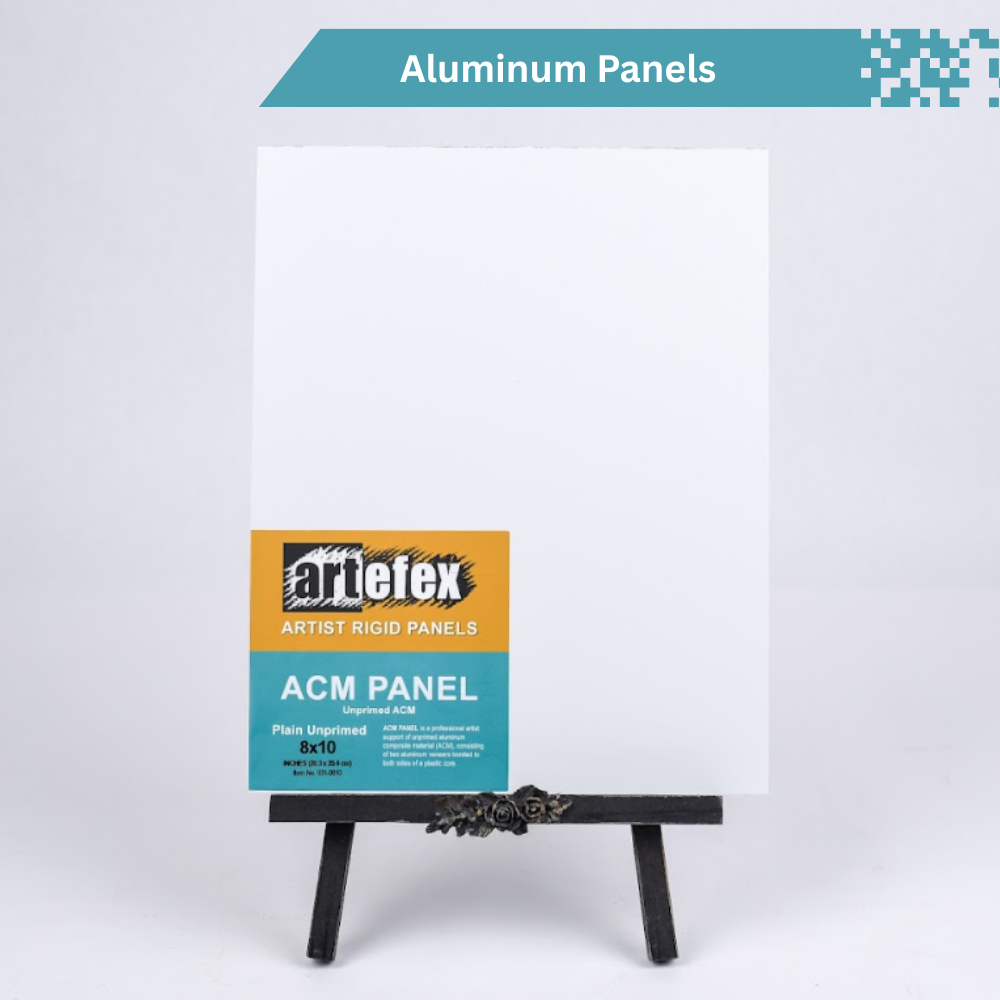 Unprimed ACM Panels
Rated 4.6 out of 5$9.00 – $173.00Price range: $9.00 through $173.00
Unprimed ACM Panels
Rated 4.6 out of 5$9.00 – $173.00Price range: $9.00 through $173.00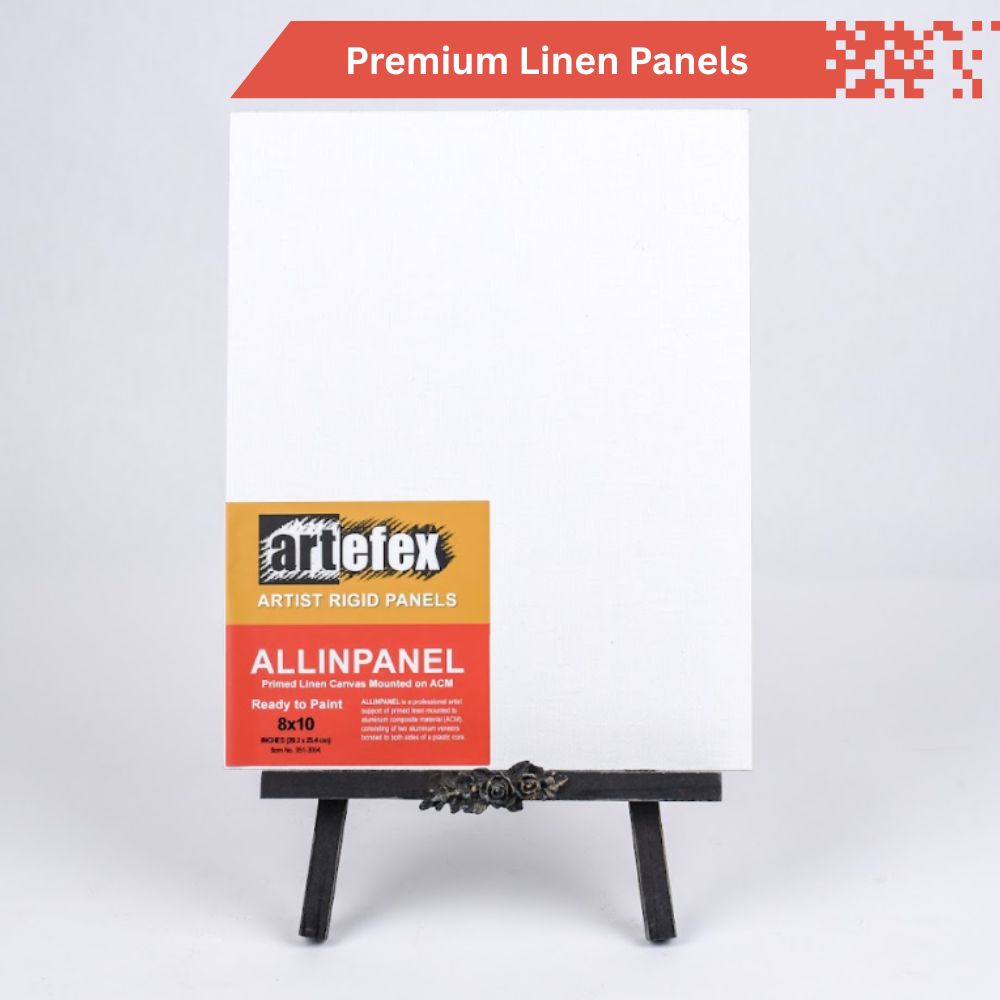 Artefex Allinpanel Oil Primed Linen Art Panels
Rated 4.9 out of 5$18.00 – $268.00Price range: $18.00 through $268.00
Artefex Allinpanel Oil Primed Linen Art Panels
Rated 4.9 out of 5$18.00 – $268.00Price range: $18.00 through $268.00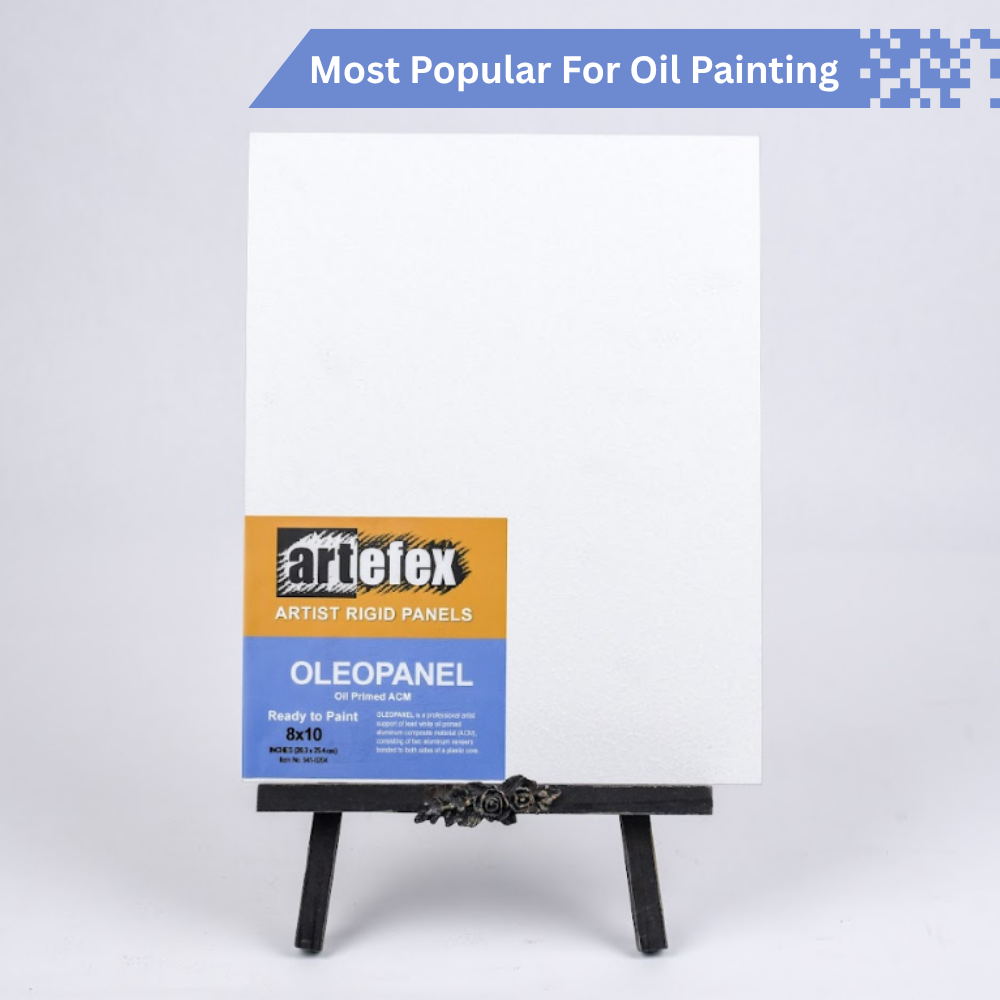 Artefex Oil-Primed Art Panel - Oleopanel (Lead Oil)
Rated 5 out of 5$8.00 – $226.00Price range: $8.00 through $226.00
Artefex Oil-Primed Art Panel - Oleopanel (Lead Oil)
Rated 5 out of 5$8.00 – $226.00Price range: $8.00 through $226.00 Arthur Gain Art Panels
Arthur Gain Art Panels
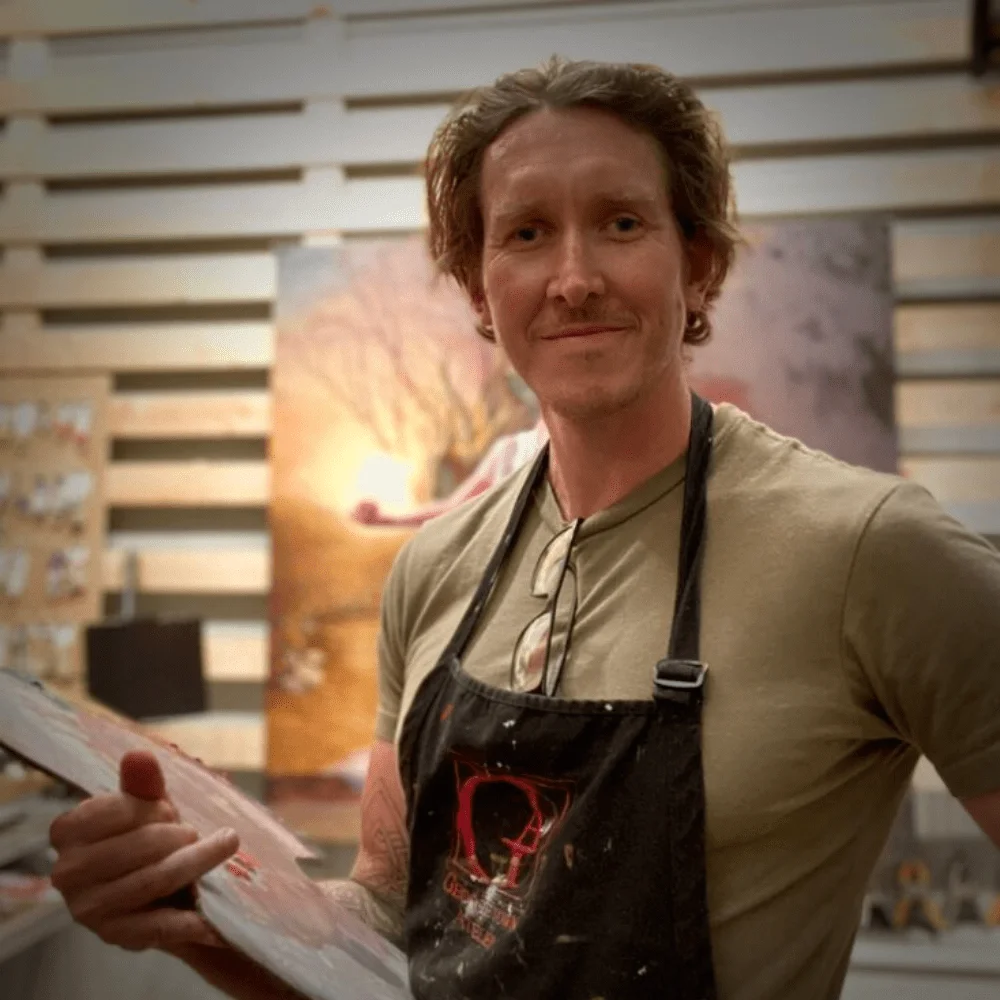 Christopher Remmers Workshop Panels
$150.00 – $275.00Price range: $150.00 through $275.00
Christopher Remmers Workshop Panels
$150.00 – $275.00Price range: $150.00 through $275.00
 Tony Ryder Class Panels
$25.00 – $192.00Price range: $25.00 through $192.00
Tony Ryder Class Panels
$25.00 – $192.00Price range: $25.00 through $192.00
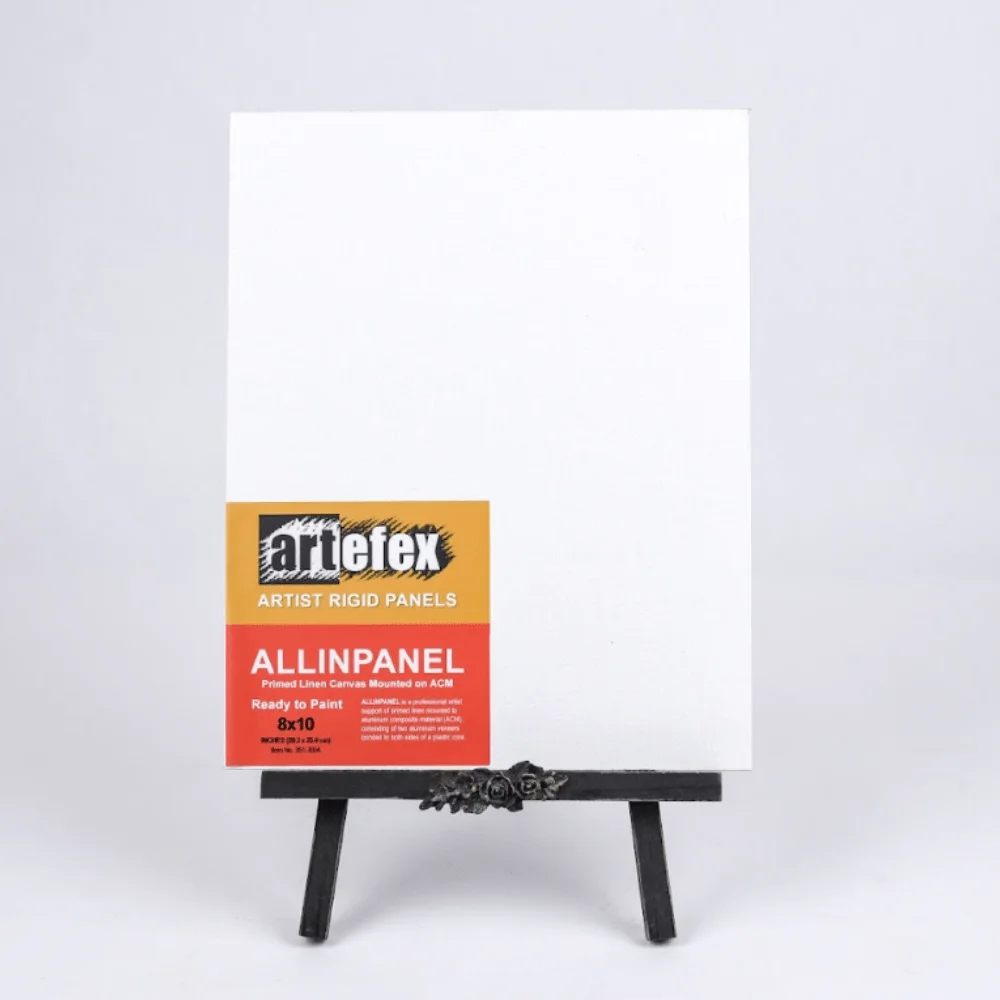 574 Extra Fine – Allinpanel Primed Acrylic Art Panels | 9x12" | 3mm | Panel of The Week
574 Extra Fine – Allinpanel Primed Acrylic Art Panels | 9x12" | 3mm | Panel of The Week
 530 Medium - Allinpanel Primed Acrylic Art Panels | 16x20" | 3mm | Panel of the Week
530 Medium - Allinpanel Primed Acrylic Art Panels | 16x20" | 3mm | Panel of the Week
 411 - Oil-Primed Art Panel – Oleopanel (Lead Oil) | 16x20 | 3mm | Panel of The Week
$59.50 – $178.50Price range: $59.50 through $178.50
411 - Oil-Primed Art Panel – Oleopanel (Lead Oil) | 16x20 | 3mm | Panel of The Week
$59.50 – $178.50Price range: $59.50 through $178.50

